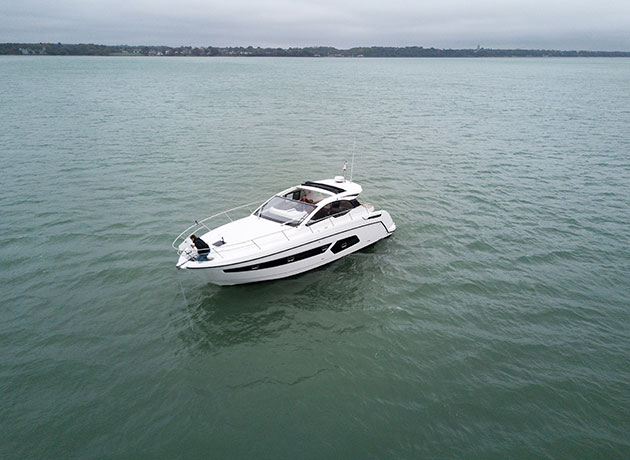In this two-part mini series we explain how to use IPS as smoothly as possible
When IPS drives arrived back in 2005, it was viewed with a degree of scepticism by many people, including me. The joystick technology may have been very clever, but it seemed like a complicated way to solve the issue of how to drive a boat well.
Thirteen years on and IPS has become the standard drive system for many craft in the 40-60ft bracket, partly because it’s more fuel efficient than shafts and frees up space for accommodation, and partly because it helps convince potential buyers they can drive a bigger boat. But while it has solved much of the angst associated with tricky berthing manoeuvres it doesn’t always encourage good seamanship.
So how do you use IPS effectively? The theory is simplicity itself: twist the joystick and the boat will rotate, push it in any direction and the boat will move that way too. So where’s the problem? Well, having spent the summer watching countless IPS boats churn their way around the marina with excessive amounts of noise, wash and rocking, it seems that some owners aren’t finding it quite as simple as it sounds.

VIDEO: How to – Hold your boat steady
MBY’s definitive guide to boat handling. In this episode we show you how to hold your boat steady

VIDEO: How To – Leave a windy berth
One of the most daunting manoeuvres a motorboater can face – learn the best way to deal with leaving a
And with ever larger boats starting to use IPS, the problem is only going to get worse. However, with a bit of guidance the whole process can
be made much smoother and less stressful.
The first thing to appreciate is that the controls may be simple but they are also very sensitive and linked to very powerful engines. When you release the joystick, although the drive stops instantly, the boat’s momentum does not. This is exacerbated when you ask the boat to do two different things at once, such as moving sideways whilst also twisting. The two competing sets of messages send the pods into overdrive, creating large amounts of wash and lots of rocking.
This is where the seamanship part comes in. The trick is to slow everything down by bringing the boat to a halt using transits ahead and to the side to gauge when it’s fully stationary before commencing any manoeuvre. As soon as it is, the IPS ‘hold station’ function really comes into its own, although that too has its issues as it can disguise how much wind and tide there is by fighting the elements when sometimes it would be better to let them assist you.
In summary, rather than putting all your faith in IPS’s ability to muscle its way out of any situation, you’re usually better off bringing the boat to a halt, assessing the situation and using your own skill and judgement to take advantage of the elements and the IPS drives to execute a slower, gentler manoeuvre. Next month we’ll look at how to master berthing an IPS boat.






















